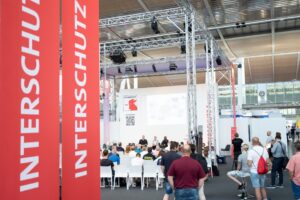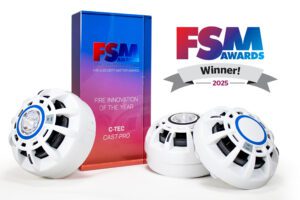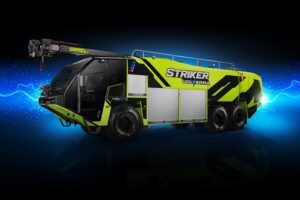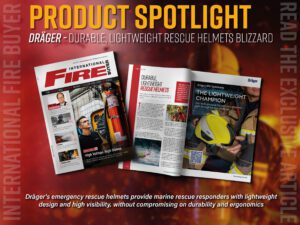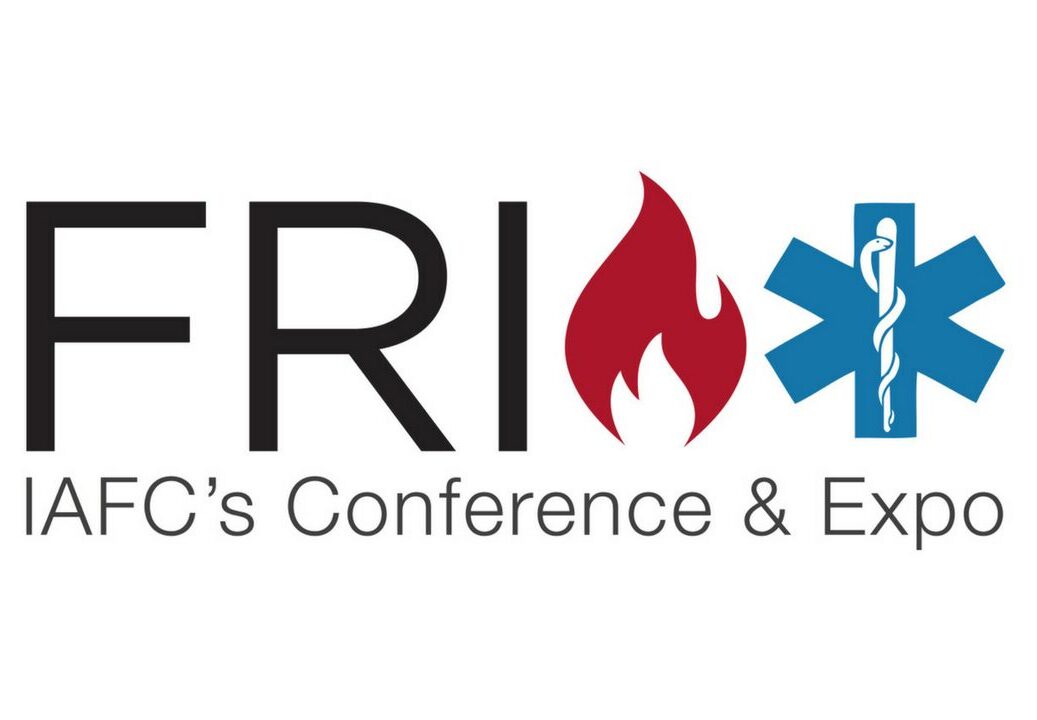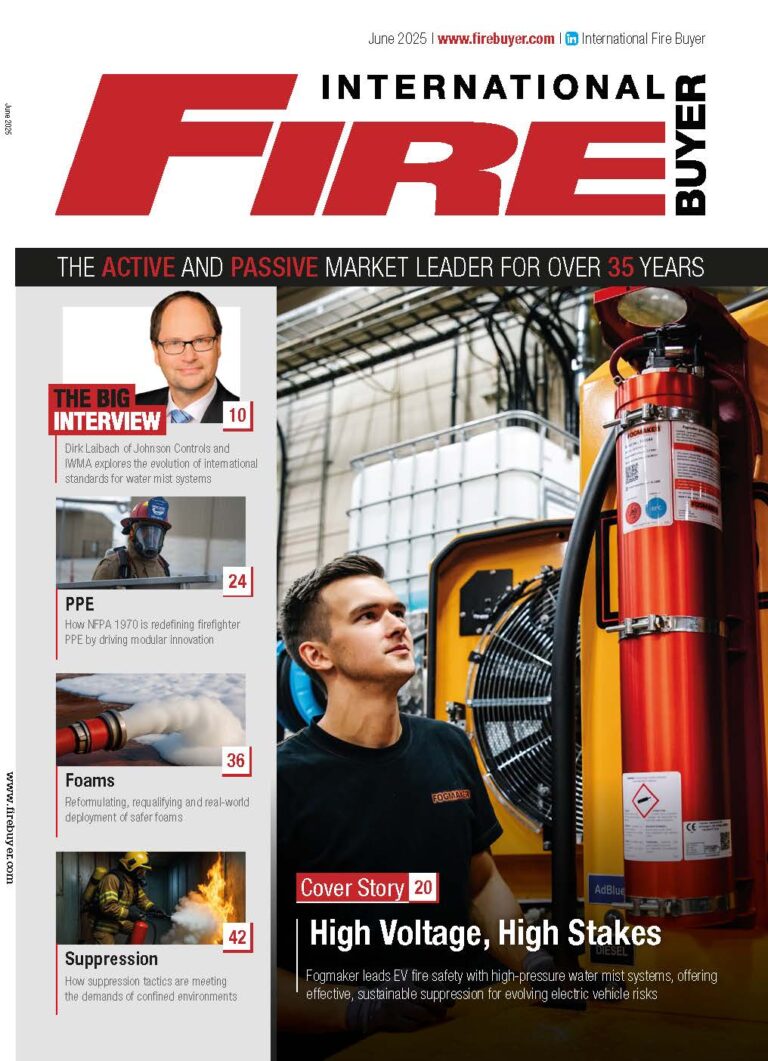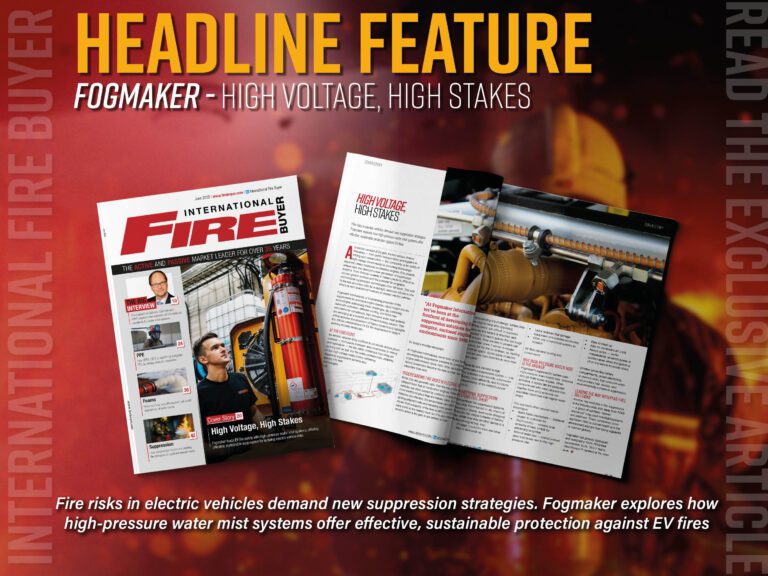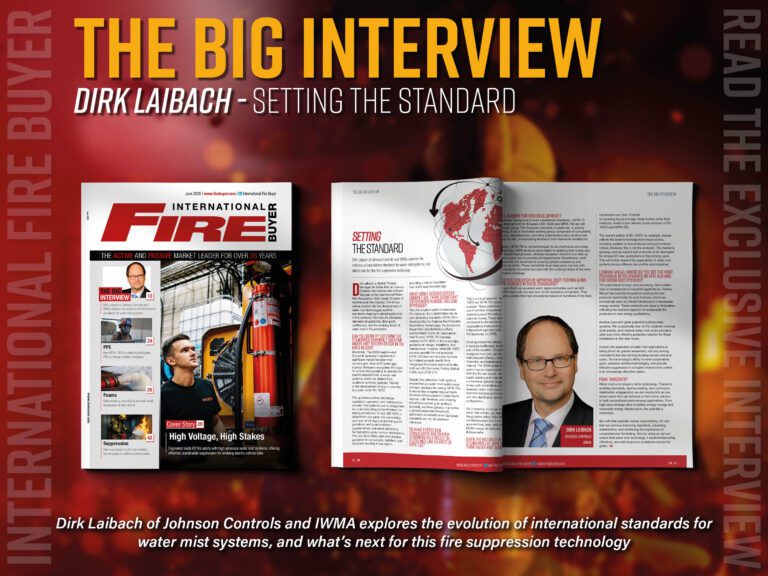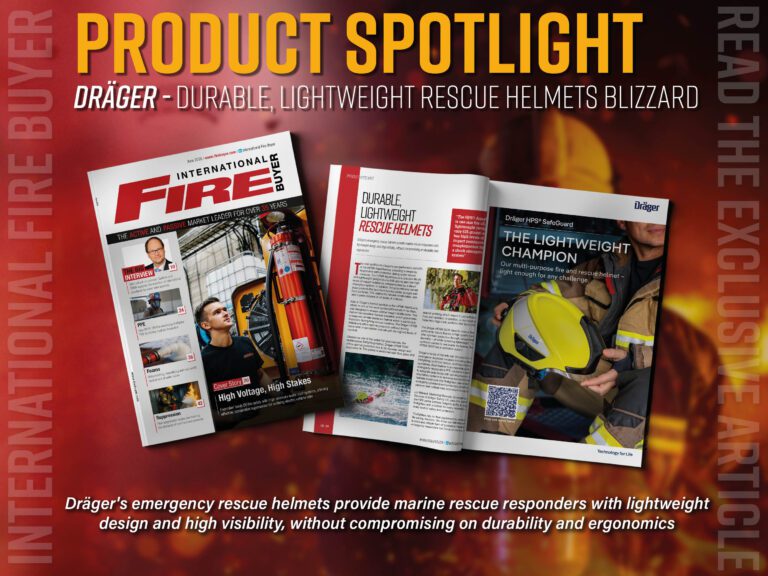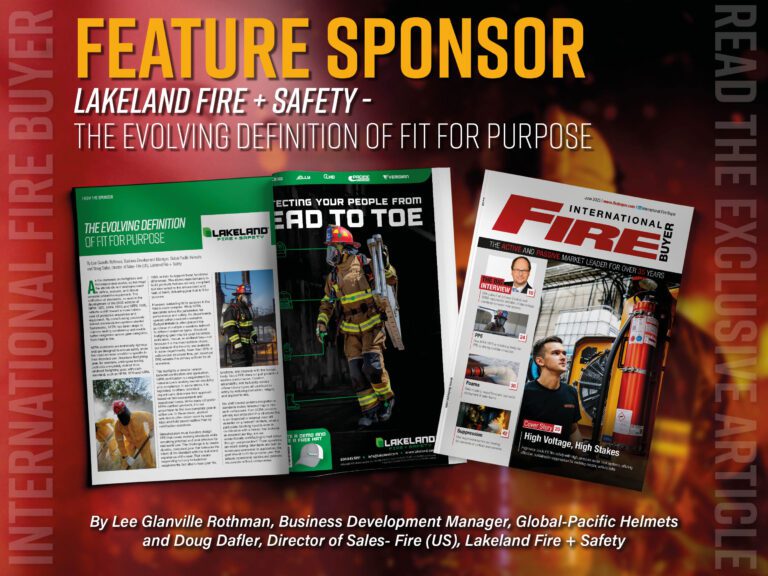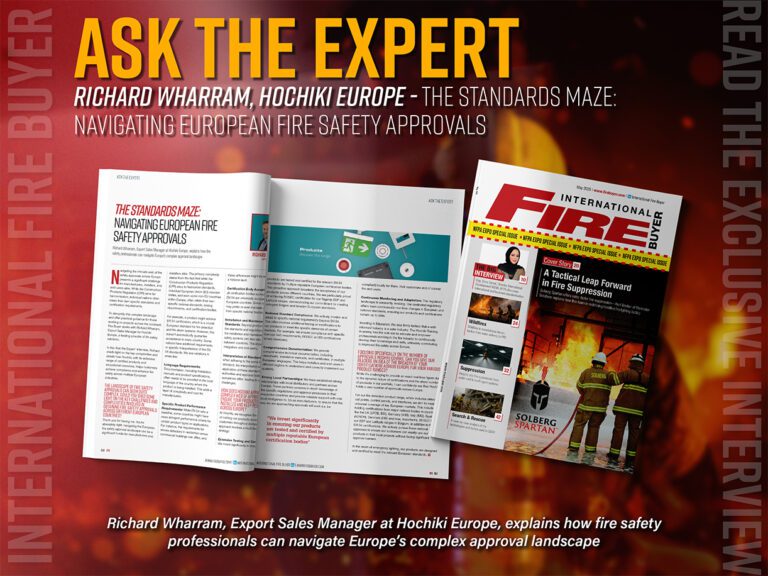How can monitors and nozzles have the maximum extinguishing ability, while minimising the use of excessive water and enhancing sustainability efforts?
Monitors and nozzles are used in a variety of ways to suppress fire. The use of a monitor or nozzle determines how much and in what way water or foam is dispersed to put out different types of fires. This type of equipment can come in many different shapes and forms and be imbedded with remote monitoring, smart capabilities and innovative technologies.
To understand what makes a nozzle better suited to some circumstances and not others, it’s important to understand a little bit more about fire.
A fire needs three elements to ignite: fuel, heat, and oxygen. The fuel can be anything flammable, like firewood or gasoline. Heat adds energy to the fuel, causing the atoms inside it to vibrate. As these vibrations intensify, stable bonds between atoms begin to fall apart, vaporizing the fuel. The chemical reaction between these vapors and nearby oxygen creates fire.
Water is widely used in firefighting for the same reason it takes so long to boil. Water resists changes in temperature. Water molecules can’t vibrate quickly unless the hydrogen bonds—the H2 in H2O—break, and that takes a lot of energy. As a result, dousing a fire with water can take away much of the fuel’s heat, interrupting the chemical reaction that sustains it.
But there’s more to fighting fires than spraying as much water as quickly as possible. Each situation requires firefighters to consider questions like:
- Will water travel far enough?
- Will the stream penetrate burning materials?
- Can heat and smoke be removed from the area using air currents created by moving water?
- How much water pressure is available?
- Does the area need to be cooled before firefighters can safely enter?
- Is the building still occupied and, if so, would steam created by firefighters harm those people?
Nozzles
In some instances, water may not be used at all. When the source of the flames is a flammable liquid, like gasoline or paint, it may be advantageous to use a foam-based extinguishing agent, which stops the fire’s chemical reaction by depriving it of oxygen. All of these considerations and more may weigh in favour of a particular nozzle for a particular use.
Pattern, pressure and gallonage distinguish one fire hose spray nozzle from another. There are three major ways in which a nozzle’s output can vary:
- Pattern: the water’s shape as it exits the nozzle
- Pressure: the water’s force, measured in pounds per square inch (PSI)
- Gallonage or discharge rate: how quickly water flows from the nozzle, measured in gallons per minute (GPM)
To read the rest of this feature, as well as the latest news please see our June issue here.
Media contact
Rebecca Morpeth Spayne,
Editor, International Fire Buyer
Tel: +44 (0) 1622 823 922
Email: [email protected]



